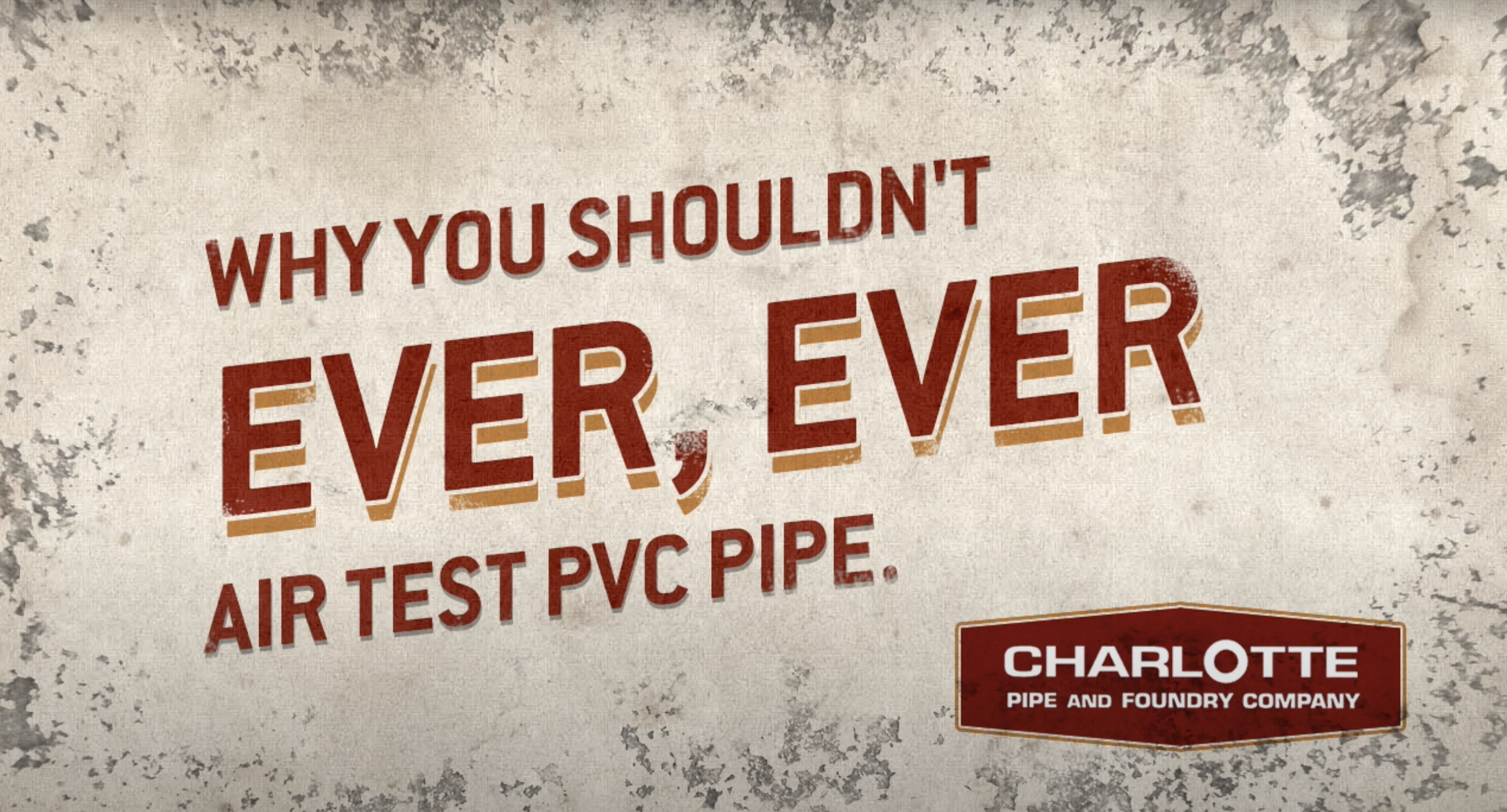Article
The Dangers of Air Testing PVC, CPVC, and ABS Plumbing Systems
After a rough-in is completed on a plumbing installation, it’s important to test and inspect all pipe and fittings before their official use. That way, any leaks identified can be corrected before the system is put into service. A thorough — and safe — inspection process not only safeguards the integrity of the plumbing installer’s work but also prevents potential system failures resulting in maintenance headaches for the building’s owners and occupants.
In all plumbing systems, it’s paramount to conduct the safest and most accurate testing possible. With this in mind, air testing of plastic piping systems is not approved by any model plumbing code in the United States.
When it comes to testing PVC, CPVC, and ABS plastic pipe and fittings for leaks, air testing is a life-safety issue.
While the most common testing method for plastic piping systems is water, installers sometimes choose air pressure because it seems quicker and easier. However, testing with compressed air can have dangerous consequences for the installer should the system fail for any reason.
“When testing with air, the air compresses and stores energy in the exact same way a bomb would, creating the possibility for an explosion,” said Brian Conner, director of codes and standards and international technical support at Charlotte Pipe. “If such an explosion were to occur, shards of pipe, test plugs, fittings, and debris would be released in all directions, leading to serious injury — or even death.”
When testing with air, the air compresses and stores energy in the exact same way a bomb would, creating the possibility for an explosion. Brian Conner Director of Codes and Standards and International Technical Support
As a result, testing with air pressure is prohibited by every nationally recognized manufacturer, standard, and model plumbing code authority, including:
- ASTM International
- International Plumbing and Mechanical Codes
- National Standard Plumbing Code
- OSHA
- Uniform Plumbing and Mechanical Codes
Watch the video below to see a demonstration showing the dangers and disadvantages of air pressure testing for PVC, CPVC, and ABS, and learn why Charlotte Pipe doesn’t recommend air testing under any circumstances.
Not only does air testing for PVC, CPVC, and ABS plastic piping systems run the risk of causing serious property damage or injury, but it’s also an inadequate and inaccurate testing method compared to water. While the test may save a few minutes of work on the jobsite, air pressure doesn’t precisely show installers where a leak is located to the same extent that water does.
Benefits of Testing With Water
Hydrostatic, or water testing is a safer, more reliable, and more accurate method than air pressure testing. Since air pressure will vary with changes in ambient air temperature, air testing results are often inconclusive. In contrast, hydrostatic pressure will not vary with ambient air temperature fluctuation.
In a water test, it’s easier to get a visual confirmation of leaks at the joints. Water testing requires minimal extra time for installers and is error-proof, making it a win-win and ensuring a safer jobsite.
5 Steps to Water Test Plastic Pipe and Fittings
Isolate each section of pipe being tested by inserting plugs through test tees. Plug or cap all other openings with test plugs or caps.
Fill the system being tested with water to the highest point. The hydrostatic pressure created as the water fills the vertical pipe increases as the water height climbs. Filling the system with water slowly should allow any air in the system to escape as the water rises. Charlotte Pipe recommends testing at 10 feet of hydrostatic pressure (4.3 pounds per square inch).
Ensure all air trapped in the system is expelled before beginning the test. Failure to remove entrapped air may give faulty test results or cause system failure.
If a leak is found, cut and discard the joint. Then install a new section using pipe and fittings.
Drain the system and prepare the next section for testing.
A Word of Caution
When conducting a test of a piping system, installers should comply with all local codes, regulations, manufacturer’s instructions, and architectural specifications. Charlotte Pipe doesn’t compromise on worker safety and vigorously warns against air testing with any piping product they manufacture.
To ensure your team’s and your own safety on the jobsite, reference Charlotte Pipe’s technical bulletin on air testing.




